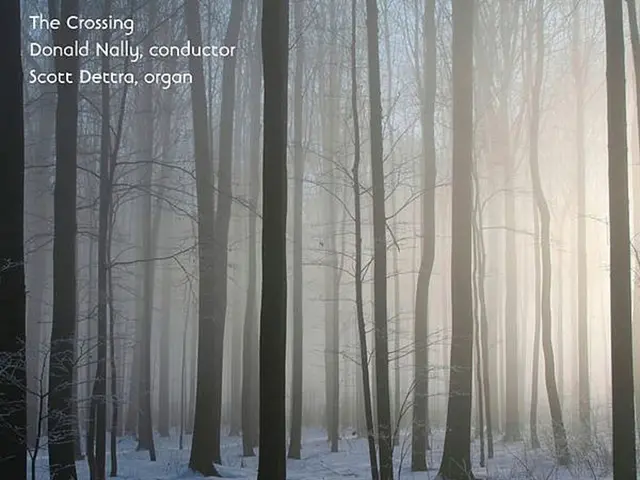Discussion: Emphasizing the unnecessary loss of life due to heat
Protecting Cities and People from Extreme Heat: The Role of Chief Heat Officers
In the face of increasingly frequent extreme heat events, cities around the world are appointing Chief Heat Officers (CHOs) to safeguard vulnerable populations and create cooler, resilient urban environments. These professionals, such as Eleni Myrivili at the United Nations Human Settlements Programme (UN-Habitat) and the Atlantic Council's Arsht-Rock Resilience Center, focus on three key areas: awareness, preparedness, and redesign.
Awareness
Raising public awareness about heat risks and protective behaviors is a crucial aspect of a CHO's role. Translating scientific knowledge into actionable advice for policymakers and communities is essential, particularly for vulnerable groups like the elderly, children, pregnant women, outdoor workers, and those with health conditions.
Preparedness
Developing and implementing heat action plans that cut across city departments is another key responsibility. By identifying hotspots via heat mapping and targeting the most exposed neighborhoods, CHOs can ensure that resources are allocated effectively during heatwaves. Coordinating stakeholders and resources across government, healthcare, community organizations, and city leaders is also essential to ensure unified, effective responses during heatwaves.
Redesign
Long-term urban redesign and nature-based solutions are vital for making cities more resilient to heatwaves. Increasing green spaces and restoring waterways can mitigate the urban heat island effect and reduce ambient temperatures over time. Advising elected officials on prioritizing and investing in cost-effective heat mitigation strategies that maximize protection for vulnerable populations within limited city budgets is a crucial part of a CHO's role.
In Athens, an algorithm was created to categorize extreme heat events into yellow, orange, and red categories based on two decades of data. This categorization helps policymakers understand the potential impact of extreme heat events and take appropriate actions. However, it's important to note that the cost of redesigning cities to be more resilient to heat may not be insignificant, and involving the private sector will likely be necessary.
The goal is to get to people early enough with good information or resources to prevent heat-related deaths. Using nature more cleverly within cities can be significantly cheaper than grey infrastructure. Designing and procuring things that are not based on cement can be challenging due to lack of knowledge and capacity, but it's a necessary step towards creating more sustainable and resilient cities.
Cities have become increasingly important players in climate change and climate policy, and their presence at COP meetings has increased significantly over the past four years. The importance of cities in decisions about climate policy and climate financing is crucial at COP30. The COP in Paris in 2015 was the first time that cities came together and said they are a significant player in climate change, and this role has only grown since then.
A good CHO must be flexible, able to think on their feet, and able to advise city officials on initiatives that protect the most vulnerable populations while also being cost-effective. As extreme heat events become more frequent due to climate change, the role of CHOs in protecting cities and their inhabitants will only become more vital.
[1] Myrivili, E. (2021). The Global Chief Heat Officer: A New Role for Cities to Combat Extreme Heat. Dialogue Earth. https://dialogueearth.com/2021/07/26/the-global-chief-heat-officer-a-new-role-for-cities-to-combat-extreme-heat/ [2] Brondizio, E. S., & Hajjar, R. (2021). The Heat is On: Extreme Heat and the Need for Urban Resilience. Dialogue Earth. https://dialogueearth.com/2021/07/21/the-heat-is-on-extreme-heat-and-the-need-for-urban-resilience/ [3] World Resources Institute. (2021). The Urban Heat Island and Extreme Heat: Impacts, Adaptation, and Mitigation Strategies. https://www.wri.org/publication/urban-heat-island-extreme-heat [4] United Nations Development Programme. (2021). Cooling Cities: Urban Heat Island Mitigation and Adaptation Strategies. https://www.undp.org/content/undp/en/home/librarypage/climate-change/cooling-cities-urban-heat-island-mitigation-and-adaptation-strategies.html
Read also:
- Digestive issues: Understanding causes, remedies, and further details about acid reflux and excessive burping
- Exploring Botox as a Treatment for Interstitial Cystitis: Insights, Adverse Effects, and Further Details
- Linking brain weakness and cognitive decline: An examination of the potential relationship
- Is it Possible that Stem Cells Improve Joint Durability and Mobility during Senior Years?





